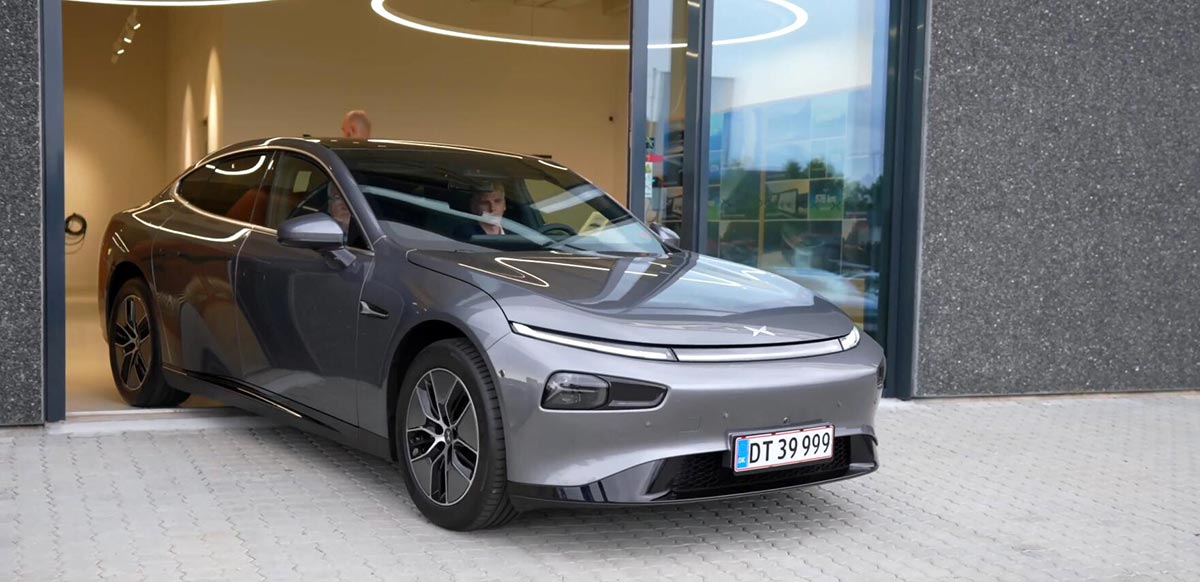Xpeng sees Nvidia's Drive Thor's 2,000 Tops of computing power as too much and has made a request for a customized Thor chip with 750 Tops of power, according to local media.

(Image credit: CnEVPost)
Chinese electric vehicle (EV) maker Xpeng (NYSE: XPEV) is in talks with US chipmaking giant Nvidia about customizing an autonomous driving chip to balance performance and cost, according to a new report.
Xpeng believes Nvidia's next-generation autonomous driving chip Thor's 2,000 Tops of computing power is too much, and has therefore put in a request for a Thor chip with a customized computing power of 750 Tops, according to a report in local media Red Plan X today.
A very important aim of the Chinese EV maker's move is to reduce the cost of city NOA (Navigation on ADAS) so that models priced as low as RMB 150,000 ($20,590) can also get the feature, the report said, citing a source close to Xpeng.
However, it will be a challenge for Nvidia.
If Nvidia gives Xpeng a scaled-down Thor chip, then other carmakers may also set their computing power requirements in that range, leaving the Thor chip with 2,000 Tops of power that the US chipmaker has spent a lot of money developing potentially idle, the report said.
Nvidia unveiled Drive Thor, a new system for autonomous driving, on September 20, 2022, as a successor to Drive Orin, targeting automakers' 2025 models.
Drive Thor delivers 2,000 Tops of performance, which is eight times the performance of Drive Orin currently used in mainstream EV models.
In 2021, Nvidia unveiled Altan, an autonomous driving chip to replace Orin, capable of delivering 1,000 Tops of power and scheduled to be available in 2024. Altan was replaced with the release of Drive Thor.
A 750 Tops of computing power can support city NOA functionality, while 2,000 Tops seems excessive for current algorithms, the Red Plan X report noted.
Thor with 2,000 Tops of power is more expensive than Orin, but could be cheaper than Orin if lowered to 750 Tops, the report said.
He Xiaopeng, Xpeng's chairman and CEO, sees the reduction of city NOA's cost as the key to the success of the company's strategy, with the goal of bringing the cost of the feature down to around RMB 10,000, thus allowing models in the RMB 150,000 class to carry the city NOA feature as standard, according to the report.
Speaking on an analyst call after Xpeng announced its second-quarter earnings on August 18, Mr. He said the company's multiple cost-reduction projects are moving forward efficiently and he is confident Xpeng will achieve its goal of reducing overall costs by 25 percent by the end of 2024.
"These cost reduction initiatives will result in significant improvement in our gross margins in 2024 while significantly improving the competitiveness of our products," Mr. He said at the time.
Two years ago, Mr. He said that no car company could offer competitive autonomous driving features in the RMB 150,000 class because of cost. But now he has changed his view.
"As we implement technology innovation and cost reduction, I have seen a clear path and timeline that gives us great confidence in offering fully autonomous driving cars in the mainstream RMB 150,000 rang," he said on the call.
Notably, on August 2, Xpeng confirmed that Wu Xinzhou, its vice president of autonomous driving, had resigned for personal and family reasons.
Xpeng didn't mention Wu's new job, but tech outlet 36kr reported at the time that Wu would be joining Nvidia, likely as a global senior vice president and reporting to Jensen Huang, co-founder and CEO of the US chip giant.
In addition, the Red Plan X report today said Xpeng will develop its own autonomous driving chips to further reduce costs.
Xpeng contracted its investment in chip R&D after sales slumped last year, but with the success of the G6, chip R&D is back as one of the company's key investments, according to the report.
At this year's 1024 Tech Day event, Xpeng will announce plans for its chip development, the report said.
($1 = RMB 7.2847)



